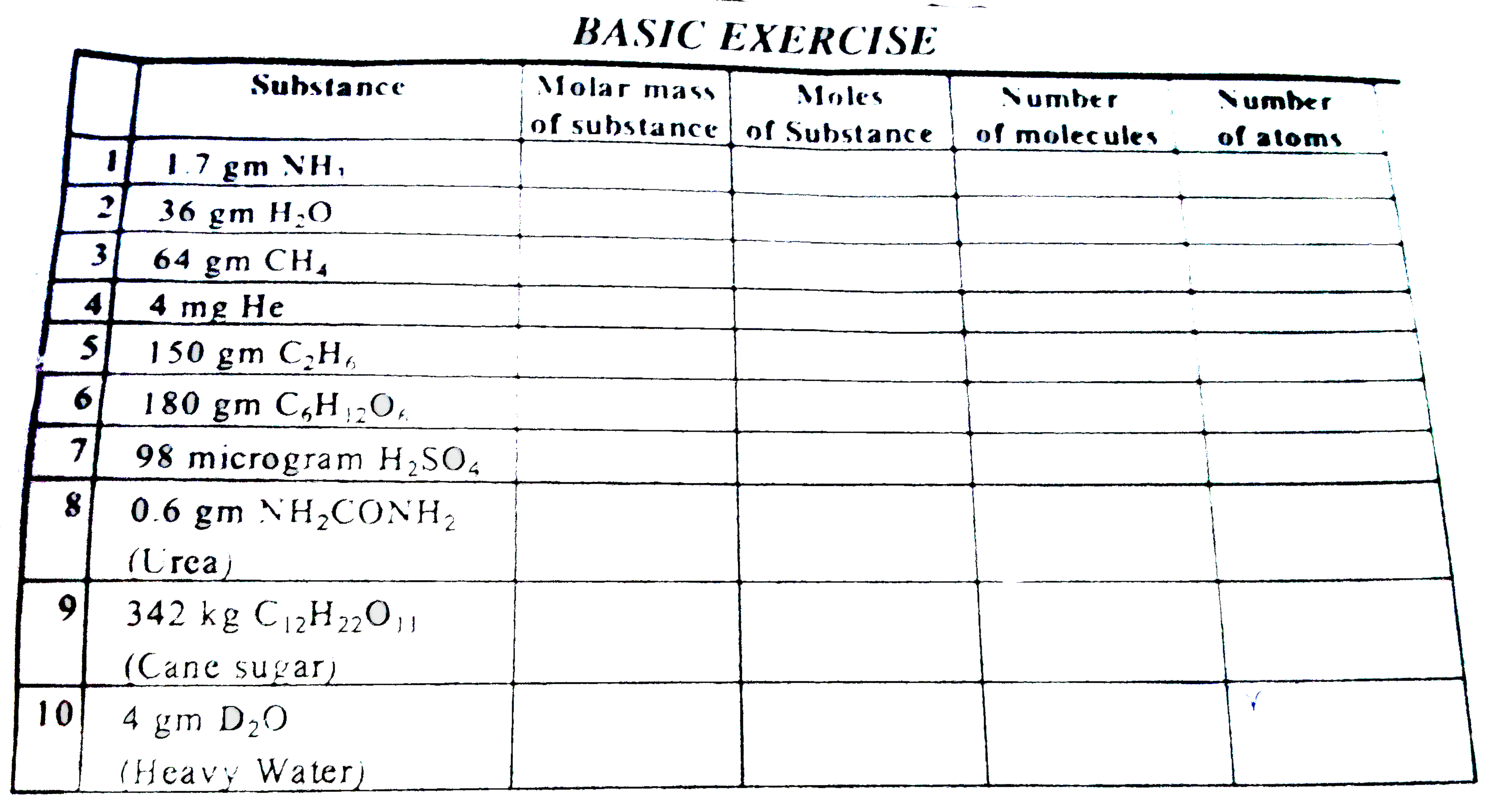For the reaction : , if 'a' mole of A is taken initially and 'x' moles of A get dissociated at equililbrium. What is the value of degree of dissociation?
The correct Answer is:D
To find the degree of dissociation for the reaction A⇌nB, we can follow these steps:
Step 1: Understand the Reaction
The reaction indicates that one mole of A dissociates to form n moles of B.
Step 2: Initial Moles of A
We start with 'a' moles of A. This is our initial amount before any dissociation occurs.
Step 3: Moles Dissociated at Equilibrium
Let 'x' be the number of moles of A that dissociate at equilibrium.
Step 4: Moles of A at Equilibrium
At equilibrium, the number of moles of A remaining will be:
Moles of A at equilibrium=a−x
Step 5: Moles of B at Equilibrium
According to the stoichiometry of the reaction, for every mole of A that dissociates, n moles of B are formed. Therefore, the number of moles of B formed will be:
Moles of B at equilibrium=n⋅x
Step 6: Define Degree of Dissociation
The degree of dissociation (α) is defined as the fraction of the initial amount of reactant that has dissociated. It can be expressed mathematically as:
α=Moles of A dissociatedInitial moles of A=xa
Step 7: Final Expression
Thus, the degree of dissociation (α) for the reaction is:
α=xa
Conclusion
The degree of dissociation is given by the ratio of the moles of A that dissociate (x) to the initial moles of A (a).
---
The reaction indicates that one mole of A dissociates to form n moles of B.
We start with 'a' moles of A. This is our initial amount before any dissociation occurs.
Let 'x' be the number of moles of A that dissociate at equilibrium.
At equilibrium, the number of moles of A remaining will be:
Moles of A at equilibrium=a−x
According to the stoichiometry of the reaction, for every mole of A that dissociates, n moles of B are formed. Therefore, the number of moles of B formed will be:
Moles of B at equilibrium=n⋅x
The degree of dissociation (α) is defined as the fraction of the initial amount of reactant that has dissociated. It can be expressed mathematically as:
α=Moles of A dissociatedInitial moles of A=xa
Thus, the degree of dissociation (α) for the reaction is:
α=xa
The degree of dissociation is given by the ratio of the moles of A that dissociate (x) to the initial moles of A (a).
Similar Questions
Knowledge Check
A 1-litre container contains 2 moles of PCI5 initially. If at equilibrium, Kc is found to be 1, the degree of dissociation of PCI5 is
A1B−1C12D50For the reaction : C(Graphite)+CO2(g)⇔2CO(g). At equilibrium the mole precent of CO is equal to 50% in gas phase. What is the degree of dissociation, x. (Assume equal number of moles of C(graphite) and CO2 at the start)
A12B13C14D15For the reaction PCl5⇔PCl3+Cl2, Supposing at constant temperature, if the volume is increased 16 times the initial volume, the degree of dissociation for this reaction will becomes:
A4 timesB14 timesC2 timesD12 times
What is the value of i when solute is associated and dissociated ?
View Solution
A→2B+C
3B→2D
Find moles of D produced if initially 3 moles of A are taken.
View SolutionFor the reaction, x+y↔2z initially 1 mole of x, 1.5 mole of y & 0.5 mole of z are taken, then at equilibrium 1 mole of z is obtained . If Keq=X/15 then , find the value of X.
View SolutionFor the reaction 3A⇔C+2D, initially A was taken. At equilibrium the concentration of D is twice that of A. The value of Kc is
View SolutionFor the reaction :
7A+13B+15C⇒17P
If 15 moles of A, 26 moles of B and 30.5 moles of C are taken initially, then limiting reactant is:
View Solution